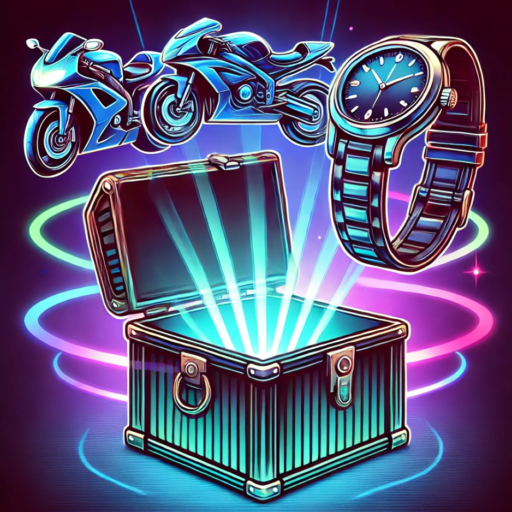The rise of the unboxing culture
In recent years, unboxing has transformed from a niche internet curiosity to a full-blown cultural phenomenon. What began as simple videos showing someone opening a new product has evolved into an entire genre of content, complete with dramatic camera angles, high production value, and millions of views. Unboxing is more than just opening a box it’s an experience, often fueled by anticipation, excitement, and the promise of something new.
Unboxing content taps into our natural curiosity. There’s a universal appeal in seeing a pristine package slowly revealed to show what’s inside. It’s the digital equivalent of opening a gift except it’s available on demand, and we don’t even have to buy anything ourselves. That feeling of shared excitement is what makes unboxing videos so addictive.
Why we love unboxings
There’s a psychological thrill tied to unboxings. Part of it stems from the concept of delayed gratification the longer the wait, the more intense the reward. Viewers live vicariously through the creator, experiencing the novelty and luxury of new products without spending a dime. It’s marketing magic disguised as entertainment, with influencers often shaping viewers’ perceptions before they’ve even touched the product themselves.
The aesthetic side plays a role too. Clean packaging, glossy finishes, and well-lit setups are designed to make a product appear premium and desirable. It’s a carefully curated reveal, and when done right, it can be more compelling than a traditional advertisement.
When expectations don’t match reality
As captivating as unboxings can be, they can also lead to crushing disappointment. Sometimes the product simply doesn’t live up to the hype, and the experience leaves both the creator and audience feeling underwhelmed. The stark contrast between what was promised and what is delivered is often glaring—and impossible to ignore.
This disconnect is usually the result of over-the-top marketing, misleading previews, or overly enthusiastic influencer endorsements. The more excitement that’s built up beforehand, the greater the fall when the product fails to meet expectations.
Overhyped products that fell flat
There’s no shortage of examples when it comes to overhyped products. From tech gadgets that promised groundbreaking features to luxury items that were all flash and no function, the list is long. One notable example is the infamous smart rings or foldable phones that generated buzz but offered clunky, unfinished experiences in real life.
Other disappointments have come from high-profile brand collaborations or limited edition drops that prioritize aesthetic over actual performance. The packaging might be top-tier, but once the plastic is peeled off, what’s left can be shockingly underwhelming.
The role of influencers in creating unrealistic expectations
Influencers are often the first to receive and showcase new products, setting the tone for public perception. When they’re paid or gifted items, their reviews can be less than objective, painting an overly glowing picture of what to expect. Their excitement whether genuine or strategic fuels the hype machine.
While not all influencers are disingenuous, there’s a growing gap between influencer experiences and that of the average consumer. The lighting, camera quality, editing, and even the tone can elevate a product far beyond what it actually offers in person.
Memorable unboxing fails
Some unboxing letdowns are so dramatic they become memes or cautionary tales online. These are the moments when expectations are crushed in real time, often to the embarrassment of the brand and sometimes the unboxer.
Tech gadgets that disappointed
Technology is one of the most unboxed categories on YouTube and social media, and it’s also one of the most prone to disappointment. Whether it’s a drone that barely flies, headphones with poor sound quality, or smart devices riddled with bugs, tech fails are painfully common. One major disappointment in recent years was a highly anticipated gaming console accessory that looked great but was plagued by faulty performance and short battery life.
Luxury items that didn’t deliver
There’s something particularly disheartening about luxury unboxings gone wrong. When someone spends a premium on a designer handbag or exclusive fashion item, the expectations are sky-high. Unfortunately, even big-name brands have been guilty of delivering low-quality craftsmanship or poorly thought-out designs that just don’t justify the price tag.
Collectibles and limited editions that missed the mark
Limited edition items are all about scarcity and exclusivity. However, when the product arrives and it feels cheap, rushed, or poorly packaged, the sense of betrayal is strong. Some collectible items have been mocked online for looking completely different from the promotional images, sparking outrage in fan communities.

What makes an unboxing a letdown?
Not every disappointing unboxing is due to a faulty product. Sometimes it’s about the entire experience falling short of what was expected. There are several factors that contribute to this sense of dissatisfaction, and they often overlap.
Packaging vs. product quality
Brands know that first impressions matter. That’s why so many invest heavily in sleek packaging. But when all the effort goes into the box and not the contents, it feels like smoke and mirrors. Beautiful presentation can’t mask a poorly made or mediocre item, and that disconnect often fuels frustration.
Misleading product images and descriptions
E-commerce is notorious for this. A product might look incredible online with crisp, professional photos and exaggerated features but in person, it tells a different story. The color may be off, the material might feel flimsy, or the functionality might be vastly overstated. This bait-and-switch dynamic has been a major contributor to the rise in unboxing letdowns.
Lack of functionality or value for money
Sometimes a product works fine, but it just doesn’t do enough to justify its cost. Whether it’s missing features, underwhelming performance, or an overall sense of mediocrity, consumers are left feeling like they didn’t get what they paid for. This is especially frustrating when a product was sold as revolutionary or game-changing.
The psychology behind unboxing disappointments
There’s a deep psychological component to why some unboxings feel like such a letdown. It’s not just about the product—it’s about the emotional journey leading up to the moment it’s opened. When that emotional investment isn’t rewarded, it can lead to real feelings of regret or even anger.
Anticipation vs. reality
Anticipation is powerful. It builds excitement and makes the reward feel more significant. But when the reality doesn’t match the mental image we’ve built, the crash is hard. That gap between what we imagined and what we actually receive is where most unboxing disappointments live.
Emotional investment and buyer’s remorse
Buying something new often comes with emotional weight. Maybe it’s a long-awaited purchase, a splurge, or something tied to a milestone. When it falls flat, the disappointment is amplified by the sense that we’ve been let down not just as consumers, but emotionally. That’s where buyer’s remorse kicks in especially if the product is non-refundable or hard to resell.
Learning from the letdowns
While unboxing failures can sting, they offer valuable lessons for both consumers and brands. Understanding why something didn’t meet expectations can help everyone involved do better next time.
How brands can do better
Transparency, quality control, and honest marketing go a long way. Brands that focus on substance over style, and who communicate clearly about what they’re offering, tend to avoid the backlash that comes with failed expectations. Including real photos, accurate descriptions, and thorough testing can help manage consumer expectations from the start.
Tips for consumers to avoid the hype trap
Consumers can protect themselves by taking a few simple steps. Look for third-party reviews, especially those that include detailed unboxings from everyday users. Be wary of early influencer content, and always question whether a product truly meets your needs or if you’re just swept up in the excitement. Patience, skepticism, and a bit of research can prevent a lot of unboxing regrets.








